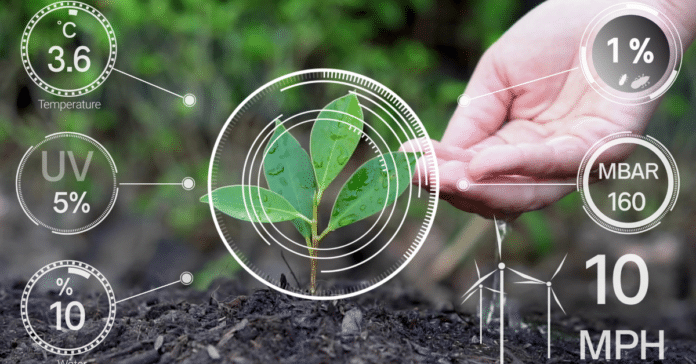Table of Contents
Introduction
Food technology is the application of scientific and engineering principles to the production, processing, preservation, packaging, and distribution of food. It involves the use of advanced techniques and technologies to improve the quality, safety, and sustainability of food.
Food technology plays a vital role in ensuring that the food we eat is safe, nutritious, and of high quality. It helps to improve the efficiency of food production, reduce food waste, and extend the shelf life of food products. Food technology is also instrumental in developing new food products and processing techniques that meet the changing demands of consumers.
Advancements in Food Processing Techniques
High-pressure Processing
High-pressure processing is a non-thermal food preservation technique that uses high-pressure water to inactivate microorganisms, enzymes, and other harmful substances in food. This technique is particularly useful in preserving fresh juices, fruits, vegetables, and meat products.
Irradiation
Irradiation is a food preservation technique that uses ionizing radiation to kill harmful bacteria, viruses, and parasites in food. This technique is commonly used in the preservation of spices, meat, poultry, and seafood.
Nanotechnology
Nanotechnology involves the use of very small particles to enhance food quality, safety, and shelf life. For example, nano sensors can be used to detect pathogens in food, while nano emulsions can be used to create stable food emulsions.
Microwave Heating
Microwave heating is a food processing technique that uses microwave energy to heat food quickly and uniformly. This technique is commonly used in the production of ready-to-eat meals, snacks, and other convenience foods.
Food Additives
Types of Food Additives
Food additives are substances that are added to food to enhance its flavor, appearance, texture, or nutritional value. They can be categorized into several types, including preservatives, sweeteners, colorants, and emulsifiers.
Importance of Food Additives in Preservation
Food additives play an essential role in preserving the safety and quality of food. They can prevent the growth of harmful microorganisms, delay food spoilage, and improve the shelf life of food products.
Examples of food additives include sodium benzoate, which is commonly used as a preservative in soft drinks and other acidic foods, and high fructose corn syrup, which is used as a sweetener in many processed foods.
Food Safety
Importance of Food Safety in the Food Industry
Food safety is of utmost importance in the food industry because contaminated food can cause serious illness or even death. The World Health Organization estimates that globally, 1 in 10 people fall ill each year due to foodborne illnesses, with children under the age of 5 being the most affected. Food safety is critical in preventing the spread of foodborne illnesses, protecting public health, and ensuring consumer confidence in the food industry.
How Food Technology Helps to Prevent Foodborne Illness
Food technology plays a critical role in preventing foodborne illness by controlling the growth of microorganisms and reducing the risk of contamination. For example, pasteurization is a common food processing technique used to kill harmful bacteria in dairy products, while sanitizing agents are used to disinfect food processing equipment. Food packaging also plays a role in food safety by preventing contamination and extending the shelf life of food products.
Regulatory Standards For Food Safety
There are several regulatory standards in place to ensure the safety of the food supply. In the United States, the Food and Drug Administration (FDA) is responsible for ensuring the safety of all domestic and imported food products. The FDA sets standards for food labeling, inspections, and recalls, and works with food manufacturers to develop and implement safety measures. Similarly, in the European Union, the European Food Safety Authority (EFSA) is responsible for assessing and communicating the risks associated with food and feed safety.
Food Packaging
Importance of Food Packaging
Food packaging is critical for protecting food from contamination, preserving its quality, and extending its shelf life. Packaging also plays an essential role in marketing and communicating information about the product to consumers.
Types of Food Packaging
There are several types of food packaging, including flexible packaging, rigid packaging, and modified atmosphere packaging. Flexible packaging, such as pouches and bags, is lightweight and cost-effective, while rigid packaging, such as cans and bottles, is more durable and provides better protection. Modified atmosphere packaging is a technique that alters the composition of the air surrounding the food to slow down the growth of microorganisms and delay spoilage.
Innovations in Food Packaging
In recent years, there have been several innovations in food packaging, such as biodegradable and compostable packaging materials, active and intelligent packaging that can detect and communicate information about the food, and nanotechnology-based packaging that can improve the shelf life of food products.
Future of Food Technology
Emerging Technologies in Food Technology
Emerging technologies in food technology include 3D printing of food, gene editing to improve crop yields, and the use of artificial intelligence to improve food safety and quality. Other areas of development include the use of blockchain technology to track the origin and safety of food products and the use of robotics in food processing and packaging.
Potential Benefits and Challenges of Future Food Technology
The potential benefits of future food technology include improved food safety, increased efficiency in food production, and the development of new and healthier food products. However, there are also challenges associated with the use of emerging technologies, such as ethical concerns around gene editing and the potential for increased environmental impacts.
Summary of advancements in food technology
Food technology has played a significant role in improving the safety, quality, and sustainability of the food supply. Advancements in food processing techniques, food additives, and food packaging have helped to reduce the risk of foodborne illness, extend the shelf life of food products, and provide consumers with more choices.
Impacts of Food Technology on the Food Industry and Consumers
The impacts of food technology on the food industry and consumers are significant. Food technology has helped to increase efficiency in food production, reduce food waste, and improve food safety and quality. It has also led to the development of new and innovative food products that meet the changing needs and preferences of consumers. However, there are also concerns around the potential negative impacts of food technology, such as the use of harmful additives and the environmental impact of food packaging materials.
Overall, it is clear that food technology has played and will continue to play a critical role in the food industry. As technology continues to advance, it is important for regulators, food manufacturers, and consumers to stay informed and engaged in order to ensure that the benefits of food technology are maximized and its potential negative impacts are minimized.






























